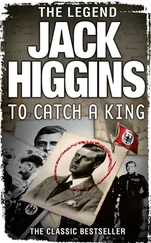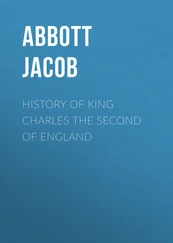The neighbouring Channel Island, Guernsey, had a strong Puritan element, and was keenly supportive of Parliament. With this enemy lying less than thirty miles away, Carteret insisted that all of Jersey’s regular soldiers and militia publicly profess their loyalty to the Crown. He had an open Bible placed on a drumhead, and as he watched, ten men at a time stepped forward, each placing a hand on the canvas, before being led by a priest through an oath of commitment to the king of England.
Carteret also equipped ten frigates to prey on Parliamentary shipping. This man, who had made his name fighting against pirates, now oversaw a network of privateers, operating in the name of the king. They caused consternation to the enemy at sea, and provided prizes that were sold to fund increased defences and supplies on land.
Anticipating that Parliament would soon send a task force to try to recapture Jersey and seize Charles, Carteret stocked and secured his strongholds. Their stores were filled with salted fish, corn, peas, biscuit and beef. His reserves were so plentiful that he filled the church at Castle Cornet with them, while stripping back its roof to form an additional artillery platform. Further cannon were placed along the island’s coast at all likely landing points.
Sir George had two new cisterns, capable of holding more than eighty tons of water, installed in the upper ward of Elizabeth Castle. He established his headquarters there, and had the prince stay with him as his guest. Despite the military threat, and the visiting prince’s reduced circumstances, the show of royal ceremony was painstakingly maintained.
We know, from a diarist living on the island, that at dinnertime Charles would hear grace bareheaded, before putting his hat on to eat. He would then sit alone at the head of the table, where silver cutlery had been laid out for him. A priest would stand to his right, while his lords and courtiers remained bareheaded and on their feet behind him while he ate. As he waited for his food to arrive, a kneeling pageboy would help him to wash and dry his hands.
Dinner was offered in a succession of silver serving dishes, containing selections of meat, fish and game, which were placed before him. Food that Charles liked the look of was taken to a carvery, where a taster tested it. Sliced up, it was returned to the prince on a silver platter.
Two pages waited, on bended knee, while he ate. One was constantly ready with a silver dish containing slices of bread. The other was the cupbearer. When Charles beckoned this servant forward, he held the goblet to his master’s lips with one hand, while with the other he positioned a second cup to catch any drops before they could splash onto the prince’s clothes. There was no stinting on pomp for the prince even when his court was minute, he was effectively in exile, and his dominion was a dot of an island.
Charles remained under Carteret’s protection on Jersey from April till June 1646. Already tall, and with the tufts of a moustache sprouting, the prince seems to have had an affair with the lieutenant-governor’s daughter Marguerite, who was five years older than him. A key subplot of Charles’s life, his pursuit of women, continued as the First Civil War reached its conclusion, and progressed steadily from this point on.
Henrietta Maria was insistent that her eldest son should come to her in France. There she hoped to keep him safe, and under her control, while her husband continued his increasingly hopeless resistance in England. This was very much against the wishes of Sir Edward Hyde and the other conservative advisers travelling with the prince. They wanted to keep him out of the orbit of France, because it was the historic, Roman Catholic, enemy of England. Hyde believed that what the queen was asking Charles to do breached ‘the fundamental rules of policy’.12
Hyde had planned to be an Anglican priest, until the death of an elder brother left him as his father’s potential heir. Becoming a lawyer and a Member of Parliament instead, he remained wedded to the strictest principles of the Church of England. These made him pious in some eyes, but priggish to others. In many ways he seems to have seen himself as the keeper of his young master’s conscience.
Furious that her instructions were being ignored, Henrietta Maria sent a delegation to Jersey to insist on Charles’s removal to France. It was led by her great favourite, Henry, Lord Jermyn. The distrust of Hyde and his allies for the queen’s judgement, and for her inner circle’s trustworthiness, was intense. Hyde had developed a particular dislike of Jermyn on a number of grounds, ranging from his promotion of the plan to take the prince to live in France, to his having impregnated a beauty at court and then refusing to marry her. Jermyn was also the hereditary governor of Jersey, and there were strong suspicions that he was planning to sell the island to France.
To the traditional supporters of the Crown, such as Hyde, Jermyn epitomised the sort of insufferable and devious character that the queen liked to surround herself with. ‘The English about Her Majesty, most favoured and consulted by her,’ recorded one observer, ‘were generally subjected to betray her counsels, and were too well known to have little regard to virtue, or to be acted by any settled principle of religion or honour. The old cavaliers did not care to trust any of them, and when they confided their sentiments, advices, & measures to Sir Edward Nicholas [a leading Royalist in exile, who was often at odds with the queen], they positively insisted that he should not communicate any of them to those confidants of Her Majesty, nor even to the Queen herself, who could conceal nothing from them, but consulted them in all affairs.’13
Eventually Charles was persuaded to obey his mother’s wishes and go to France with Jermyn. Only one of the councillors appointed by his father accompanied him to St-Germain-en-Laye, west of Paris, where Henrietta Maria resided. The rest refused to do so. The division in the senior Royalist ranks, between the ‘Louvre group’, who supported the queen and her French leanings, and those traditionalists who saw things in a narrower and more patriotic light, could hardly have been more starkly shown.
Hyde stayed behind in Jersey, where he began to write the early parts of The History of the Rebellion , his celebrated chronicle of the English Civil War. He knew that, for now, he had lost the battle for influence over the Prince of Wales to Henrietta Maria, and had to accept that, just like his father, young Charles was ‘irresolute’. This was Hyde’s polite term for being open to, and acting on, dangerously bad advice.
Charles left for France in June 1646. He was included in the activities of the French court at Fontainebleau that summer, his future value to the English Royalist movement attached to his liberty, and his eligibility as a royal bachelor.
Henrietta Maria hoped to engineer a marriage for him with her niece Anne Marie Louise of Orléans, Duchess of Montpensier. ‘Mademoiselle’, as she was known, was three years older than the prince, and not lacking in self-esteem. One of her pleasures was listing her many physical attributes in a journal. She relished the fineness of her height and figure, the glory of her auburn hair, the oval prettiness of her face, while not forgetting the finer details, from the coral bud of her lips, down to the daintiness of her feet: ‘There were not wanting those who complimented me on the beauty of my face and form’, she wrote, or ‘the fairness of my complexion, the brilliancy of my hair; no less admirable, they confessed, than all the riches which bedecked my person’.14
To Henrietta Maria, the good looks were a bonus. It was her niece’s vast inheritance and royal blood that made her an especially desirable daughter-in-law. But Mademoiselle was more interested in the idea of marrying the Holy Roman Emperor, who had been widowed that May, than in contemplating life with the gauche English prince, whose French was poor, and whose only conversation seemed to be about horses, hunting and dogs.
Читать дальше












